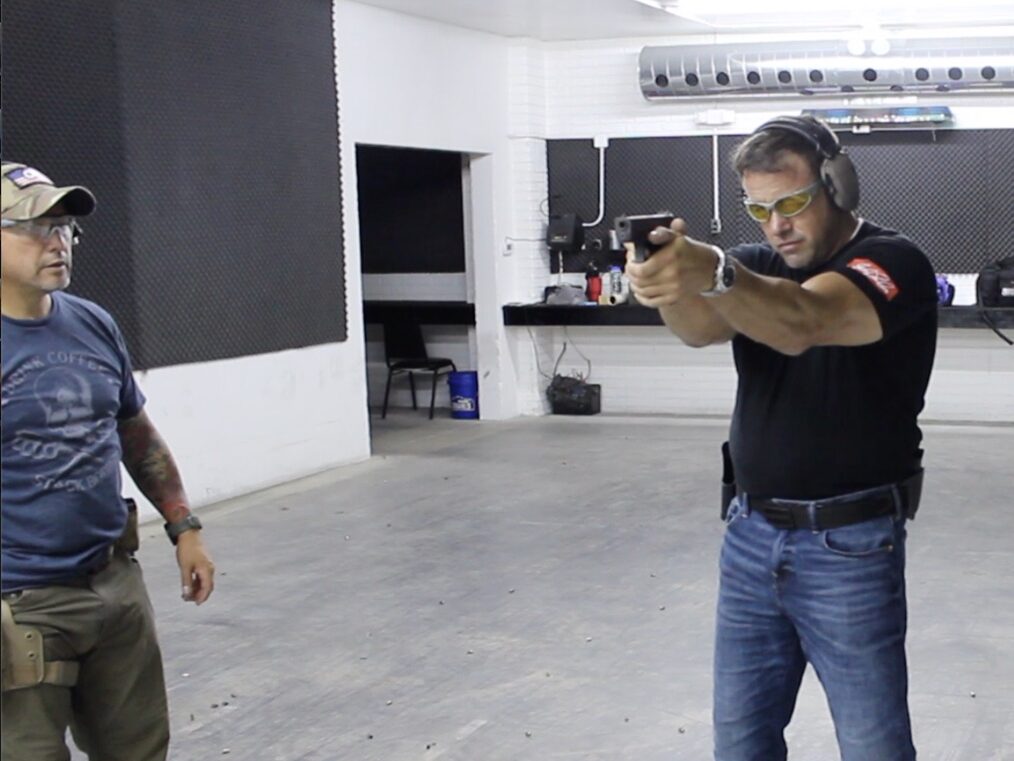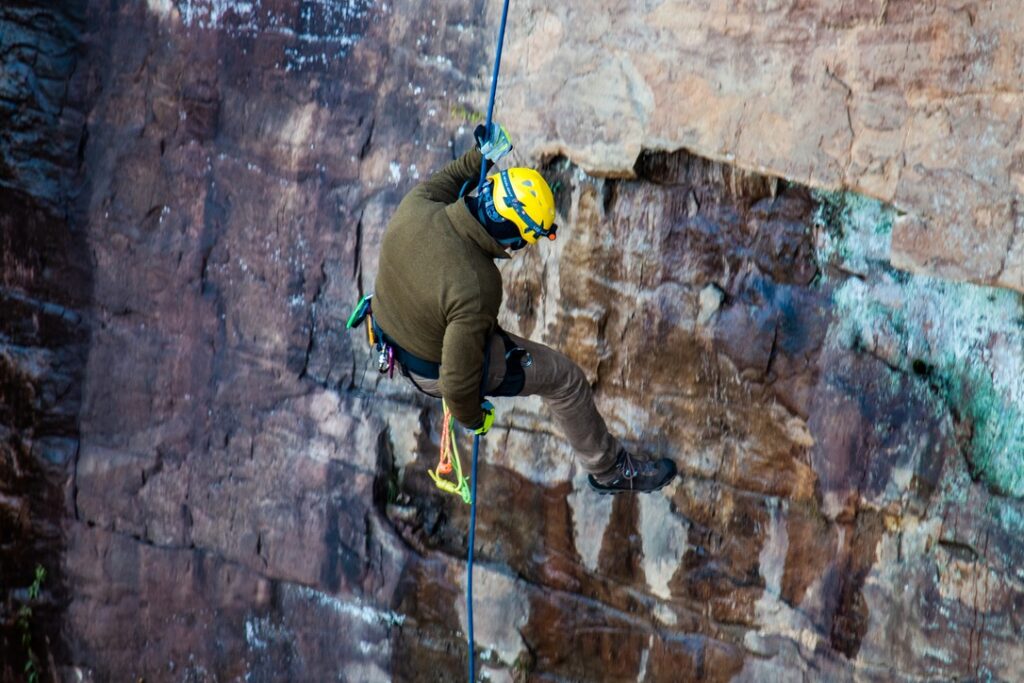At Our Last C-Tac instructor training, camp, and conference, one of the topics. We started to look at disaster preparedness on the last day. The topic of disaster preparedness is often met with a sense of complacency or even dismissiveness by those who think, “It can’t happen to me.” However, the increasing frequency of natural disasters, civil unrest, and other emergencies makes it imperative for everyone, regardless of age, location, or physical condition, to have a well-thought-out plan.

Disaster preparedness is the proactive planning and preparation to anticipate, mitigate, and respond effectively to emergencies and catastrophic events. This involves a combination of logistical planning, resource allocation, training, and informational efforts to reduce the negative impact of disasters. It encompasses individual, community, organizational, and governmental actions and may include measures like assembling emergency kits, formulating emergency plans, conducting drills, and establishing early warning systems. The ultimate goal is to minimize loss of life, property, and environmental damage by equipping people with the tools, knowledge, and strategies they need to face emergencies.
“By failing to prepare, you are preparing to fail.” – Benjamin Franklin
One way to enhance your readiness for various emergencies is to assemble a comprehensive 72-hour survival kit. This all-in-one resource is designed to be versatile, serving you well whether you’re hunkering down in your current location or forced to vacate and seek safer ground. A well-stocked 72-hour kit provides essential items to sustain yourself and possibly others for at least three days, covering the basics like food, water, first-aid, and other life-sustaining supplies. By preparing this kit in advance, you’re taking a proactive step to safeguard against the unpredictability of disasters, reducing stress and increasing your chances of successfully navigating challenging circumstances.
After our most recent camp, I have received numerous inquiries from individuals asking for an essential list that they can utilize to begin building their emergency preparedness kit. These requests have emphasized the importance of being prepared for unexpected emergencies. Therefore, I have compiled a list of essential items that will aid you in designing your kit in a crisis.
It’s important to note that the items one needs may differ based on individual circumstances and the nature of the emergency. However, the following list provides a general guideline to tailor to meet your needs.
Here are some key items to consider adding to your emergency preparedness kit:
Water and Hydration:
Water and hydration are critical components of any survival kit; your bug out bag is no exception. While the human body can survive for up to 3 weeks without food, it can only go without water for about three days. Therefore, having at least one liter of water per person per day is recommended. In addition to drinking water, you should include several other water-related items in your bug out bag.
Apart from the minimum of three liters of drinking water, some items that can be added to your list include:
- Collapsible water bottle: This space-saving option can be folded or rolled up when not in use.
- Hard water bottle: Durable, long-lasting and suitable for rough terrains.
- Metal water bottle or canteen: These are reliable and can be used for cooking.
- Water filters/purification systems: These items come in different varieties and can make drinking water from natural sources safer.
- Water purification tablets: These tablets can be used to purify water in case you don’t have a water filter or boil water.
It’s also highly recommended to have a Sawyer or any other water filtration device that can remove 99.9% of bacteria and harmful microbes from water you would typically not be able to drink, making them a valuable addition to your bug out bag.
“The best preparation for tomorrow is doing your best today.” – H. Jackson Brown, Jr.
Food and Food Preparation:
Foods that are easy to prepare and require little or no water should be considered in your bug out bag. This is because water sources may be scarce during emergencies. Non-perishable foodstuffs that are high in calories and nutrients are ideal for this purpose.
Some additional food items that should be included in your bug out bag include:
- Protein/Energy bars: These small, lightweight bars are a great energy source and can keep you going for several hours.
- MREs/dehydrated meals: While these may not taste very good, they are convenient and can sustain you for a few days.
- Spork: A lightweight utensil used for eating and cooking.
- P-38 can opener: A small, reliable tool that can open cans and bottles.
- Metal cooking pot: Sturdy and can be used over open fires or a portable stove.
- Metal cup: Can hold hot beverages and soups.
- Portable stove: Can be used to cook food outdoors and is powered by fuel.
- Stove fuel: This is a must-have item if you’re carrying a portable stove. Ensure you have enough to last for several days.
Clothing:
Choosing appropriate clothing for your bug out bag may depend on the location, climate, and season. However, it’s always best to have a variety of clothes that serve different purposes and can be layered.
Here are some guidelines to follow when selecting clothing for your bug out bag:
- Lightweight, long-sleeve shirt made of poly fabric, not cotton: This type of fabric is moisture-wicking and will help keep you dry.
- Convertible (Zip-Off) pants: Pant legs can be removed and switched to shorts if it gets too hot or you must traverse through water.
- Underwear: Always include clean and breathable underwear in your bug out bag.
- Merino wool hiking socks (Qty 3 pair): Can keep your feet warm and dry in wet conditions. Plus, they don’t itch like other wool socks.
- Medium-weight fleece: Can be used for warmth and layering.
- Hat w/ Flex Brim: Has a flexible brim that can shield you from the sun or rain.
- Working gloves: Gloves that protect your hands and give you traction when handling toolsRain poncho: Lightweight, durable, and can be used as a makeshift shelter.
- Shemagh: Multi-purpose clothing item that can be used as a head wrap, neck scarf, or to cover your face from dust, smoke, or sun.
Shelter and Bedding:
The inability to get a good night’s sleep can impair judgment and reduce your ability to deal with emergencies. Ensure you have adequate shelter and bedding to keep you warm and dry.
Some items to consider including in your bug out bag include:
- Tarp: Can be used to make a shelter or protect against the elements.
- Tent (optional): A lightweight option that can provide better protection against the weather.
- Sleeping bag: Keep you warm in cold conditions.
- Ground pad: Provides insulation between your sleeping bag and the ground.
- Wool blanket: Can serve as an extra layer of warmth or a makeshift shelter.
“Luck is what happens when preparation meets opportunity.” – Seneca
Heat Source:
Being able to start a fire can provide warmth, cook food, and can be used to signal for help. It is highly recommended that you carry multiple means of starting a fire in your bug out bag.
Here are some items to consider:
- Lighter: Extremely reliable and easy to use.
- Ferrocerium rod: Provides sparks when struck with a metal object.
- Tinder (Qty 3): Can start a fire even under wet conditions.
- Waterproof storage: Can keep your fire-starting gear dry in rainy or wet weather.
First Aid:
Injuries can happen in an emergency, and having a basic first aid kit in your bug out bag is essential. The first aid kit should contain bandages, antiseptic, pain relief medication, and other critical medical items.
Some additional items to include in your pack are:
- Trauma kit: In case of serious injuries.
- Insect repellent: To repel mosquitoes or bugs that may carry diseases.
- Mylar survival blanket: Can be used as an emergency shelter or to keep you warm.
- Anti-bacterial hand wipes or sanitizer Can help prevent the spread of germs.
“Preparation is key to success.” – Alexander Graham Bell
Hygiene:
Maintaining proper hygiene is essential, even in emergencies. It can prevent the spread of diseases and prevent infections.
Items to consider for your bug out bag include:
- Wet napkins: Can be used to clean hands and face.
- Hand sanitizer: Helps prevent germs.
- All-purpose camp soap: Can be used as shampoo, body wash, and dish soap.
- Hygiene/signal mirror: This can signal for help and grooming.
- Small pack towel: Dries quickly and can be used for multiple purposes.
- Travel toilet paper (Qty 2): Comes in small, easy-to-carry packs.
- Travel-sized toothbrush and toothpaste: Can be used to maintain oral hygiene.
Tools:
You’ll want to include several tools in your bug out bag that can be used for various purposes. When choosing tools, ensure they are lightweight and serve multiple purposes.
Here are some valuable tools to consider:
- Survival knife: Has multiple uses, including preparing food, self-defense, and making shelters.
- Multi-tool: Includes multiple tools like a pair of pliers, screwdrivers, and a saw.
- Axe: Can be used for chopping wood and making kindling.
Lighting:
You’ll need a reliable lighting source in your bug out bag. This is especially important during the night or in dark places.
Here are some lighting items to consider:
- LED headlamp: Keeps your hands free and provides extra visibility.
- Mini-led keychain: Small, lightweight, and easy to carry.
- Light glowstick: Provides limited visibility but can be used as a signal for help.
- Mini LED light: Compact and easy to carry.
- Tea candles: Provides heat, light, and a way to cook in an emergency.
- Solar lantern/charger: Provides lighting and can also be used to charge cell phones or other small devices.
- Batteries: Keep extra batteries in your bag to keep your light sources powered.
Communications:
In an emergency, you may need to communicate with other people. It’s important to have devices that can serve this purpose.
Here are some communication items to consider:
- Primary – Cell Phone
- Alternate – Wifi/Tablet
- Contingency – Ham Radio w/License
- Emergency – Crank Power Charger with Signal Lights
Travel Aids:
Depending on your situation, these travel items can be helpful in emergencies.
Here are some travel aids to consider:
- $500 minimum in small bills: Can be used to purchase items in an emergency.
- Quarters (Qty 8): Can be used for quick purchases like phone calls or vending machines.
- Gold/silver bullion coins: Inflation-proof and could be used as a bartering item.
- Local area map: Provides directional information in unfamiliar territory.
- Compass: Helps with navigation.
- Small notepad and pencil: Can be used to take notes, leave messages or record conservation efforts.
- Emergency whistle: Can signal for help during crises.
- Cotton bandana (orange): A multi-purpose item that can be used for signaling distress or as a bandage.
Self Defense:

Depending on your preference, you should include self-defense items in your bug out bag.
Here are some of the things you might consider:
- Pepper spray: A non-lethal option for self-defense.
- Handgun: In case you need a lethal option for self-defense or hunting wild game.
- Takedown rifle: A versatile and lightweight option for hunting and self-defense.
- Ammunition (Qty 100 rounds min. for each firearm): Enough to last for some emergencies.
“Expect the best, plan for the worst, and prepare to be surprised.” – Denis Waitley
Miscellaneous:
Here are some additional items that didn’t fit into other categories but can be pretty useful in emergencies:
- 550 parachute cord (50′): Has multiple uses and can be used for shelter, binding, and rigging.
- Duct tape (25′): Another multi-purpose item that can be used for repairing gear, sealing leaks, and making a makeshift sling for injuries.
- 55-gallon Clear Contractor Trash Bag (Qty 2): Can serve as a ground cloth or a makeshift shelter.
- Resealable bags (Qty 5, various sizes): To organize and protect more minor items.
- Sunglasses: Protects your eyes and makes seeing in bright sunlight easier.
- N95 face mask: Protects against air pollution or contagious diseases such as COVID-19.
- Sewing kit: Can be used to repair clothes or gear.
- Latex tubing (3′): Can be used to bind things together or for food processing.
- Survival axe: Has multiple uses and can be used for chopping wood, hunting, or self-defense.
- Fishing kit: This can be used to catch fish for food.
- Binoculars (optional): Can aid in navigation or scouting.
- Face paint: Can be used for camouflaging.
- Military surplus survival/snare wire: Can be used to make traps or rigging.

The bug out bag list we provided above should not be taken as the absolute truth, as your needs and requirements will vary depending on different factors. Therefore, it is essential to take the time to do your research, understand your unique circumstances, and come to your conclusions. It’s crucial to remember that a bug out bag is not a magical solution that will guarantee your survival. It is just one aspect of being prepared for a bug out scenario. You must know how to use the items in your bug out bag effectively and practice using them regularly to be ready.
You should also note that the above items are just a starting point, not an exhaustive list. Every person’s survival plan will differ depending on their unique situation, location, and level of preparedness. Therefore, it’s crucial to tailor your bug out bag to your specific needs, ensuring you have the necessary knowledge to use the items effectively.
In conclusion, this bug-out bag list should serve as a guide for your emergency preparedness plans. However, you should always research and make informed decisions based on your circumstances. Remember, preparation and practice are essential to survival.

The C-Tac® system was innovatively conceptualized and brought to fruition by Alan Baker, with the primary goal of empowering individuals to be adequately prepared for not just self-defense situations but a myriad of potential circumstances life may bring. The conception of the C-Tac® system stemmed from Alan’s observation of the scarcity of practical, comprehensive, and meaningful training systems addressing this need. He sought to cut through the swathes of well-marketed but ultimately ineffective programs that are readily available.
For those interested in extending their journey with the C-Tac® system and exploring the opportunity to become a C-Tac® Instructor, we encourage you to visit our association website here: https://civtaccoach.com/
Should you have any questions about the program, or if you simply wish to engage in further dialogue about C-Tac® and its principles, please feel free to reach out to Coach Baker or any member of our committed team at any time. We are here to guide and support you on your personal safety, awareness, and empowerment journey.
